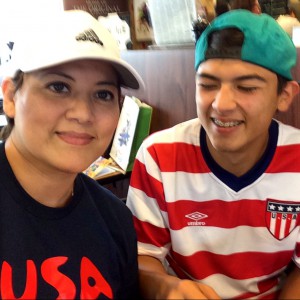| View Resource |
|
|||
| Average Rating |
|
|||
| Rate It! | To rate items you must be logged in to LifeSciTRC.. Log-in/Register now to the left. | |||
| Comment On It! |
To add comments, you must log in or register.
|
|||
| Share It! |
|
|||
| Save It! | To save the resource to a folder, please log in or register. | |||
| Description | This is a case study for high school and undergraduate students in anatomy and physiology. In particular this case study explores anatomy of the pituitary and symptoms and diseases associated with pituitary tumors. Users of the National Center for Case Study Teaching in Science will be required to register (free) to gain access to the answer key (and must be of teaching status to receive the key). Included in the resource are the case overview, objectives, case study, teaching notes and answer key. | |||
| Type of Resource | Assignment/Activity (Non-Laboratory/Non-Hands on Activity) | |||
| Format | Web Page - HTML | |||
| Author |
Eric Ribbens, Western Illinois University
|
|||
| Development Date | January 6, 2006 | |||
| Grade/Age Levels |
High School upper division (Grades 11-12) Undergraduate lower division (Grades 13-14) Undergraduate upper division (Grades 15-16) |
|||
| Pedagogies | ||||
| National Science Educational Standards |
Form and function (K-12), Understanding about science and technology (K-12) | |||
| Learning Time | 2-3 hours | |||
| Language | English | |||
| Type of Review | Reviewed By Staff | |||
| Review Date | August 14, 2012 | |||
| Funding Sources | National Science Foundation, Other , The Pew Charitable Trusts and the U.S. Department of Education | |||
| Keywords | ||||
| Suggested Use | ||||


I enjoyed this case study. It had detailed information and presented a real world situation. Discussing this will help students think through actual cases and connect the symptoms to the disorder.
—Kathy Carter, University of Louisville

I really enjoyed this case study. I have never used case studies and this will be the first one I will incorporated into my animal physiology class when we cover the endocrine system. I keep the class size small so this will be a great way to break the class into small groups and they can work out the answers to these problems. Then we can discuss each case as a class.
—Patricia A. Halpin, University of New Hampshire at Manchester

Great case study! Incorporating case studies into curriculum is important to help students understand real world situations.
—Andrea Kosinski, CABoces

This is a great case study! It is structured well for my undergraduate-level anatomy & physiology students. This will allow my students to make a connection between anatomy and physiology and real life situations, dealing with patients.
—Jennifer Militello, Cattaraugus-Allegany BOCES

Thank you for sharing this resource. The case study is structured so well (into parts) that allow for discussion time and time to work through the case in steps (to build student learning/knowledge). The "teaching notes" provide great insights for using this resource successfully.
—Jessica Ibarra, University of the Incarnate Word

Chemical Eric and Mary Keeper aching head have been my most used endocrine case studies. Chemical Eric is very appropriate for a lower division physiology class. It exists as both clicker and document form. I have used the document form, and given the case in parts- the first part can be handed out even before the lecture to make students interested. After covering the pituitary, I give them part II to read, usually over a break, followed by a short discussion about the case. Once all endocrine glands have been covered, they receive the remaining parts to work on it. Best way is to divide students in groups, and have them discuss in class for 15-20 minutes. I do not require submission, but a detailed discussion next time. It is important to address all the questions, as they help clarifying misconceptions.
—Ana Maria Barral, National UniversityTo add comments, you must log in or register.
I used this case study in a pathophysiology course. My students really enjoyed it. They told me it really helped them understand the challenges of endocrine disorders. I will use it again in anatomy & physiology or pathophysiology.
—Danielle Rintala, University of Wisconsin-Milwaukee